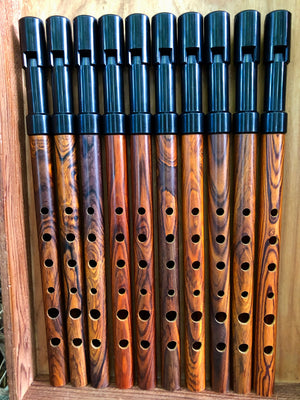If you are searching for a penny whistle, there are numerous online retailers where you can buy a penny whistle . Just be sure to conduct enough research first.
Tin whistle is an iconic instrument widely utilized in Irish traditional music as well as South African Kwela music.
How to play
Tin whistles (sometimes referred to as Irish whistles) are an easy and popular form of flute that’s accessible. Constructed of plastic or wood mouthpiece and metal tube body tube construction, tin whistles come equipped with both these features for playability.
As the first step in using a whistle effectively, begin by holding it at a 45 degree angle from your face. Your dominant hand should rest at the base to help stabilize it while the other remains on top.
Next, blow a steady stream of air through your whistle until all finger holes are covered by finger pads. Don’t blow too gently as that may produce an annoying squeak while blowing too forcefully will produce too loud an note.
Once you have mastered lower octave notes, transition to playing higher ones. A whistle typically offers two octaves of notes between middle C and fourth D above middle C; these will become available during performance.
Tuning
Tuning stringed instruments (such as guitars or harps ) involves tightening or loosening individual strings to reach precise pitches on every note, while tuning whistles requires different techniques.
They are tuned diatonically, meaning their lowest note serves as the tonic of each key they play in. This allows them to easily play notes in both major and minor keys.
Also, these whistles can be tuned to different octaves by either half-holing or cross-fingering; half-holing being easier and more popular as it enables playing over a wider range than a simple one-hole whistle.
The second approach requires more skill, but can produce much richer sound quality. It involves opening and closing holes similarly to how fiddle players use their thumbs to finger notes on their fiddle, either by altering breath pressure or playing it differently from usual.
Materials
A whistle can be made of metal, wood, or plastic; though tin whistles remain the most popular choice. Other materials have recently become more affordable options.
Though traditionally made of metal, more manufacturers are opting for plastic whistles due to their consistent note quality and durability compared with metal. Plastic whistles may also be more cost effective and suitable for beginners.
Plastic whistles are easier to maintain, since they won’t scratch or rust like metal ones would. But it is important to keep in mind that plastic may become unsanitary over time if left in direct sunlight.
Some whistles come equipped with carrying cases to keep their whistle clean and free from grime, while if not, having a whistle cleaning swab handy is highly recommended – you should look for something similar to what piccolo players would find available at local music stores.
Care
As a penny whistle player, it is crucial that you take proper care in maintaining your instrument. One way is by clearing away any moisture it has collected over time and wiping clean.
To maintain its sleek appearance and keep it from looking worn-out quickly, avoid any chemicals which could deteriorate its wood or leave behind marks on its surface.
As part of maintaining wood, it is also recommended to oil it periodically in order to prevent it from drying out and cracking over time. This will keep your floors in great shape!
When cleaning a wooden whistle, it’s advisable to use a small piece of lint-free cloth wrapped around a dowelling and draw the fabric through multiple times for an efficient clean.

